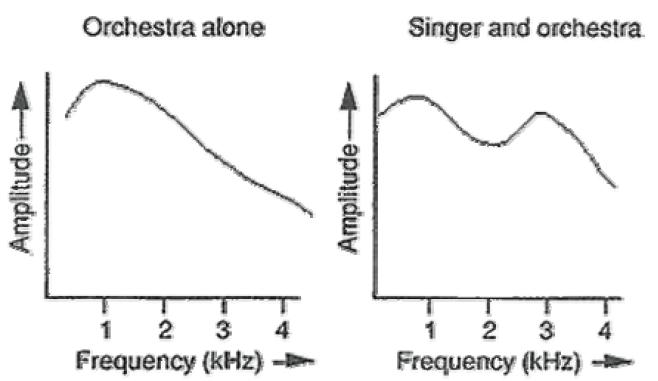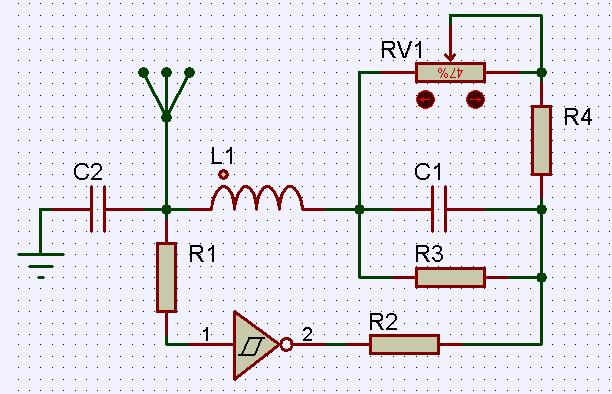Hi Dewster,
I hope your mysterious malaise has passed!
Sorry - I wish I could give a reference - its one of those bits of an article I extracted, and never referenced - I will email the bits I have if I can find anymore that what ive posted.
Well waddaya know! I found it! ->
http://www.feilding.net/sfuad/musi3012-01/html/lectures/017_instruments_IV.htm
With regard to device delays, I think this is a major topic for truly HF oscillators (> >> 10MHz) but dont really know if this is major below 1MHz - or at least not major compared to the other huge sources of error inherent in theremins.
I am also starting to think that precision is far less critical / important in analogue designs than in digital ones.. Been playing with some circuits that I would have thrown out in the past, but finding that I cannot hear any difference between them and much more complex designs - when it comes to simulation, one can I think get too pedantic - building the damn things and comparing them, those wonderful spectrum's I spent days crafting on the simulator are quite different when looking at them 'live' - and the crap ones are also different - and even the crap ones sound better live than in simulation, and often sound just as good as the complex designs that gave a perfect spectrum.
To be honest, when it comes to oscillators (and probably theremin development ;-) , I am burned out - The maths involved with them gets beyond me when one starts to look at things like phase noise and delays etc, and mathematicians dont even seen to be able to put a half-decent oscillator together.. You steered me away from parallel tank designs with your lovely CMOS oscillator/s, and I have now developed an oscillator based on a TS555C which seems to perform beautifully, and think I have found a good method for electronically linearizing the response using separate BPFs and phase comparators which can linearize both the far and near fields independently..
"Haven't done 1/10 the research you have Fred"
LOL ;-) .. Truth is, I think ive done at least 10* the research I should have! - It shifted outside of the domain of "needed" research a long time ago, and became an obsession.
Time to start using it.
Fred.
I have got horribly distracted.. Been working on oscillators and bits for my ribbon - trying to optimize the design.. There are a load of 'blocks' which are nearly the same function.. Oscillators + HF BPF's driving phase comparators for volume, and for pitch linearity correction - and I decided to build these on a common small PCB each, so that I could have a batch of multi-function boards made...
Then there was that student recently presenting yet another hopeless horrible theremin design he built from some crap circuit found on the wweb.. and I thought, two of these little boards would do everything he needs... They have one TS555C, IF transformer (actually, only a tunable inductor is required) , a few R's and C's, give a good 40V P-P on the antenna for 5V supply, and the mixer can be a simple OR gate directly from the 555 discharge pins wired as Or (also has sine mixing available from spare winding on IFT).. Single transistor buffer (not absolutely needed) and one has a triangle @ 2V P-P and / or a classic diode mixer.
So I have diverted a bit to develop modules that can make a simple one-stick, and be expanded by adding other modules for volume, electronic linearization etc, all the way hopefully up to a register switching (as E-Pro) instrument with better sound ;-) .. This sort of fits well with the book I am writing.. I intended to include a complete theremin design in it, and refer to this in each appropriate chapter - Having a common circuit for oscillators and BPFs means I only need to explain the circuit operation once! ;-)
I am seriously starting to wonder about what REALLY makes a sound appealing - Been focusing on formants for a long time now, and studied formants of human voice and resonances of classical instruments - I had this reverence, thinking that Lev actually crafted these deliberately into his instruments... I am now shifting to thinking it was probably accidental (or rather, not designed on paper or with a slide rule, but "designed" hands on, exploiting undocumented characteristics of audio transformers and the like) - that its actually 'randomness' which makes a sound interesting.. That the only reason perhaps why we (some) like the formants from the original instruments is because we 'link' it to a particular player... A bit like recognizing a persons voice.. give that voice to someone else to sing, and it will only satisfy if its sung in the same way as the original 'owner' did..
For a long time I think I missed the bloody obvious - Spent too much time looking at waveforms on recordings rather than looking at spectrums..The Lev theremins waveforms change dramatically as a function of pitch, and I missed the reason for this - I am now nearly sure that the primary reason is (mainly audio frequency) resonances within the instruments electronics.
Perhaps the formant controls shouldn't be on the front panel - perhaps they should be a bunch of presets the owner can access, tune the instrument for "their" voice, and then leave alone - every one could then be unique (in terms of its resonances - still have control over waveforms etc). Every mass produced electronic musical instrument sounds essentially the same - no two acoustic instruments sounds exactly the same, even if mass produced - Perhaps (?) for non-percussive instruments like violins and theremins, a resonant "character" is really important ?
This character doesn't change (much) on any individual acoustic instrument - A violin with crappy resonances will sound like a crap violin , and those crafted by Stradivarius will sound great, and a lot of what differentiates them is (I think) the placement of the (fixed or only having minor player control over ) formants / resonances of these instruments. Having worked in studios and designed some high-end audio stuff, the instinct is to go for as flat a frequency response as possible, to allow harmonics to be sculpted later - one doesnt go making the response bumpy! - But actually, I think its probably bumps in the "right" places, right in the core instrument, which may be needed!



